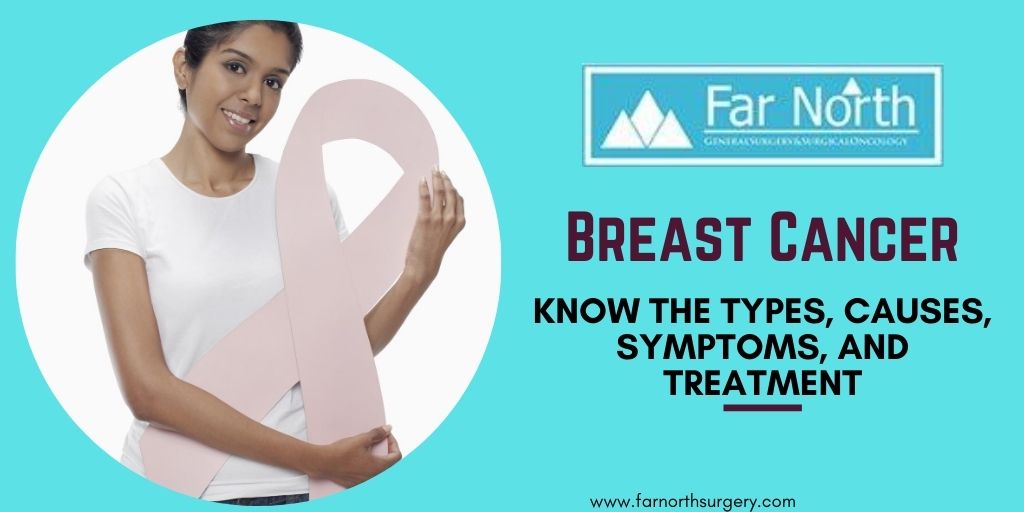


Breast cancer develops in the ducts or lobules of the breast and surrounding tissues. The glands that produce milk are called lobules, and the pathways that bring the milk from these glands to the nipple are called ducts. Sometimes, breast cancer can also develop in the fatty tissue within your breast.
Even though breast cancer develops mostly in women, men also contribute to a tiny percentage (1%) of breast cancer cases. On average, you can say that 1 in 8 women will get breast cancer in their lifetime.
Most breast cancer does not present with symptoms. Many are found on screening mammograms. If there are symptoms, those can include:
If you have any of these symptoms, especially a lump in your breast, it is best to make sure it is not cancerous.
The two most common types of breast cancer are “in situ” or noninvasive and invasive. The basic difference between these two cancer types is that in situ cancers, the cancerous cells will be confined to the lobule or duct where they started. In contrast, in invasive cancers, the cancerous cells would spread to the surrounding tissues also.
Keep in mind if you do not treat in situ cancers early enough, they can become invasive. Other types of breast cancer, which are less common, include inflammatory breast cancer and metastatic breast cancer.
Experts are not fully aware of what causes breast cancer. However, your chances of getting breast cancer depend on your age, personal health history, genetic factors, and diet.
In addition to a physical examination, your doctor will also do a detailed breast exam to diagnose breast cancer. After that, to decide if your symptoms are caused by breast cancer or a benign breast condition, your doctor may request one or more diagnostic tests such as a mammogram, a breast ultrasound scan, breast MRI or a breast biopsy to help in the diagnosis.
The treatment plan for breast cancer will depend on various factors, such as which stage it is in, how far it has progressed, and how big it is. Surgery is one of the most common and effective treatment options for breast cancer. Some women may need additional treatments such as radiation, chemotherapy, or hormone therapy.
While there are some risk factors you cannot control, such as having a family history of breast cancer, you can take certain preventive measures against breast cancer. These include:
For more information on breast cancer and its treatment, contact us.